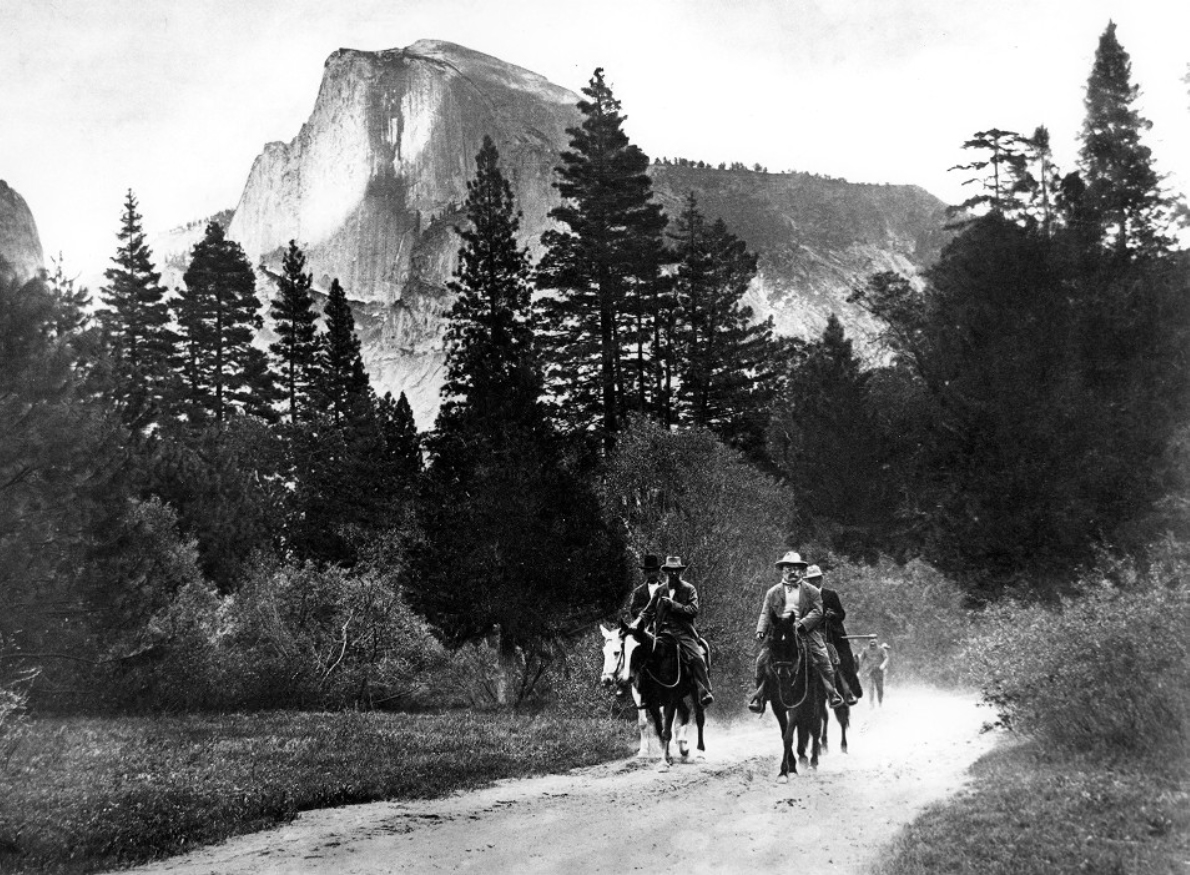Theodore Roosevelt and John Muir on Yosemite's Glacier Point in May 1903. Library on Congress
Theodore Roosevelt and John Muir went camping. The result was an expansion of national parks.
In May of 1903, Theodore Roosevelt and John Muir went on a camping trip in Yosemite that changed the nation.
The adventurous president had read Muir’s writings and expressed interest in seeing the naturalist’s beloved Yosemite. “I do not want anyone with me but you,” the president wrote in a letter, “and I want to drop politics absolutely for four days and just be out in the open with you.”

John Muir (fourth from right), Theodore Roosevelt (sixth from right), and others in Mariposa Grove.
University of the Pacific Library
The pair toured Mariposa Grove, Glacier Point, Yosemite Valley, and other natural wonders. Around a campfire, they talked late into the night, with Muir expounding on California’s natural history and the importance of preserving wild places. They slept among giant sequoias, at the foot of El Capitan, and under a silver fir during a snowfall — an experience Roosevelt recalled as “one of the most pleasant nights of my life.”

Theodore Roosevelt and John Muir on horseback in Yosemite.
Mariposa County Library
At a time when many Americans saw nature as a place to be tamed and stripped of resources, Roosevelt was charmed by Muir — a man of “delightful innocence and good will” — and enraptured by Yosemite. “It was like lying in a great solemn cathedral,” he said later, “far vaster and more beautiful than any built by the hand of man.”
Roosevelt returned to Washington energized to advance the conservation movement. In eight years as president, he helped establish six national parks, 18 national monuments, 55 bird and wildlife refuges, and 150 national forests.
This article is from the California Sun, a newsletter that delivers must-read stories to your inbox each morning . Sign up here.
Get your daily dose of the Golden State.
